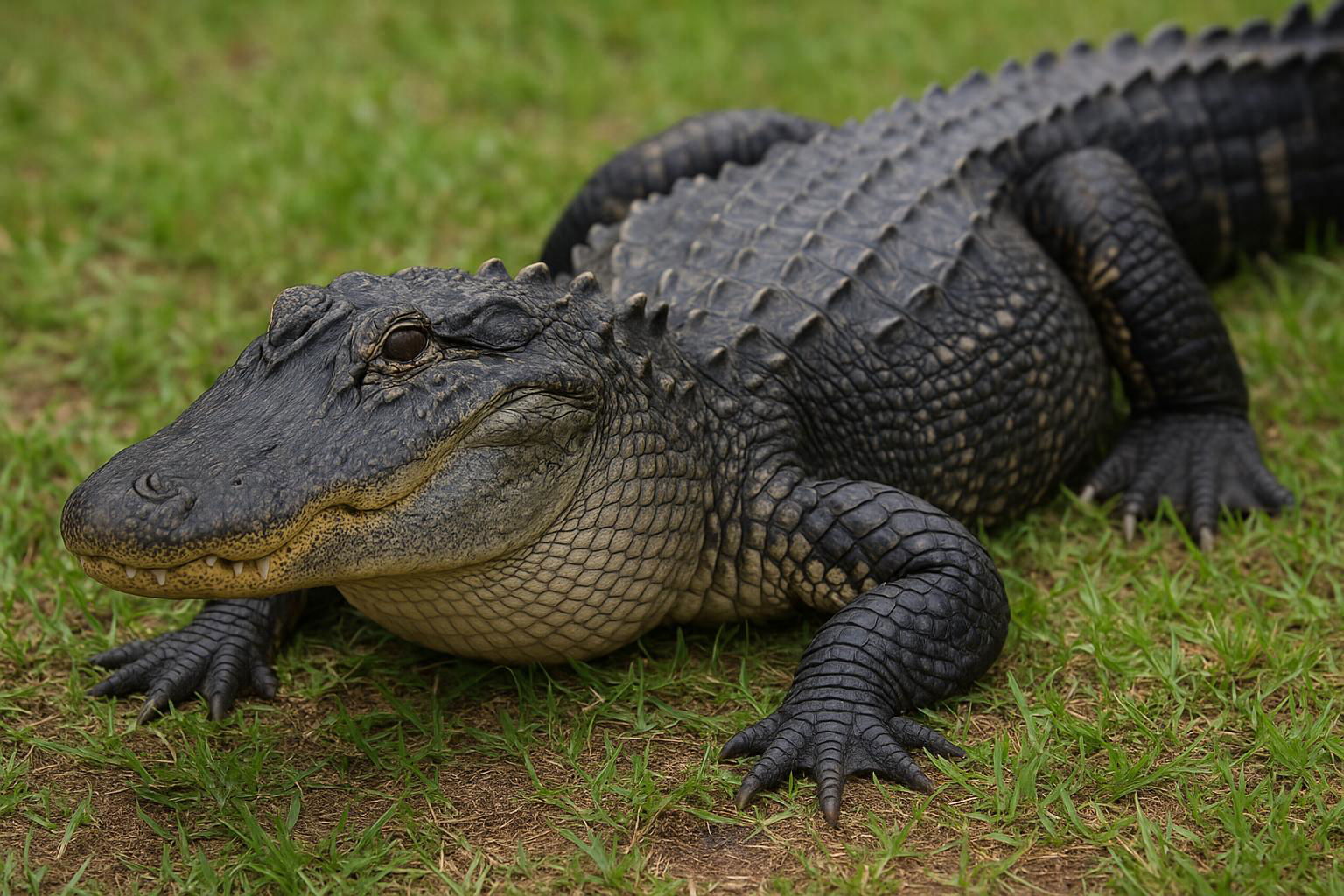
American Alligator
Alligator mississippiensis
The American Alligator (Alligator mississippiensis) is a large reptile native to the southeastern United States, primarily inhabiting wetlands such as swamps, marshes, and slow-moving rivers. This apex predator can grow up to 13-15 feet in length, although individuals over 11 feet are more common. Known for its rugged, thick, armored body and powerful tail, the American Alligator sports a dark, olive-brown coloration with a pale underside. Its broad snout is equipped with a set of sharp teeth, ideal for catching a wide range of prey, including fish, birds, and mammals.
American Alligators play a crucial ecological role in their habitats, helping maintain the balance of prey species and creating "alligator holes" that provide aquatic refuges for other wildlife during dry periods. They are primarily nocturnal and are well-adapted to both aquatic and terrestrial environments, using their powerful tails for propulsion in water and their short, sturdy legs for mobility on land. Adult alligators have few natural predators but are known for their protective behavior, especially females guarding their nests. Social and vocal animals, they communicate through a series of grunts, bellows, and head-slapping in water. After facing critical endangerment due to hunting and habitat loss in the early 20th century, conservation efforts have successfully revitalized their populations, making this remarkable species a testament to successful wildlife management efforts.

 All Species & Breeds
All Species & Breeds
 Highland Cattle
Highland Cattle
 Miniature Donkeys
Miniature Donkeys
 All Species Directory
All Species Directory
 Highland Cattle in Virginia
Highland Cattle in Virginia
 Miniature Donkeys in Texas
Miniature Donkeys in Texas












